- Details
- Denis Giles
- Hits: 6659
The Sippi Ghat Tragedy OR Loosing Sippi Ghat Again
Wetland. The very word has quite the opposite effect on environmentalists as opposed to developers. Places like swamps and bogs that seem unfit for human habitation,have been witnessing "reclamation" and these magnificent ecosystems are being transformed into land usable for construction. What beauty and natural utility is being lost in the process! These rich, usually soggy places provide critical habitat for numerous species, they help clean our water, control floods, and provide plenty of food for humans.
“Development is essential. Doing it in a planned and structured manner with sensitivity is imperative.” For a development to be sustainable, it is essential to keep in mind the following points.
Purpose of development – Clarity on the purpose of development is essential for site selection and other factors that determine its functionality. Who is the development for and will it have any repercussions? Is there a need for it?;Accessibility – Approach to the site. Are the approach roads designed to take the operation load? ; Geography/ Topography – the lay of land and how the development ties into its natural setting; Ecological importance – how will it affect the environment of that place? Is it a zone of ecological importance, home to a wide range of plants and animals being cleared for social animals? ; Social change – will it bring about out a positive or negative change?;Utilities/ Resource and Waste Management – self sustenance being the focus; and Life span and hence building material and technology– For how long is the planning for? Will it be a part of a growing, larger plan? How “green” is the development?
Can we be sensitive to these issues and develop holistically taking into account these factors that determine sustainability of the development?
Clarity on the above points is essential for a successful development. It may be a school, place of recreation, a hotel, a residential layout, industries and factories, or even a shopping mall. Haphazard planninghas led to catastrophic results in the past and will continue to do so in the future if the approach doesn’t change. Land is a limited and exhaustive resource. Humans everywhere are engrossed in developing land by bringing down ecosystems of all kinds to build habitable spaces. Little do we realise that we are causing a more ecological instability. After all, what use will all the developments be of, if it weren’t for our living world?
Every action has a series of repercussions associated with it and these factors are simply a reflection of either a thriving/ sustainable or unsustainable development. If the development lacks vision, it could lead to a haphazard and unplanned township. The consequences of an unplanned development on small islands with limited resources are magnified and can be irreversable.
There are few places in the world that can compete with Andaman and Nicobar Islands in terms of bio-diversity and therefore, our islands top most naturalists, wildlife enthusiasts and travellers chart of places to visit. Every habitat here has its unique set of inhabitants some of which are found no where else on the planet! Bringing in any development here without thought and a vision is careless and myopic.
South Andaman Island has its very own wetland treasure –Sippi Ghat, once a pristine wetland and home to an astounding variety of wildlife. It was only in the recent past that this area was ‘reclaimd’ and converted into agricultural land. What now seems to be inundated fields and lost land was merely the ocean ‘reclaiming’ this wetland, at the time of the Tsunami.
Wetlands and birds are inextricably linked; they are homes and migratory rest stops for one third of all bird species. This is critical in the island context, where tourism in fact has the potential of allowing for these areas to generate revenue and be valued for what they are and host naturally.
It is nothing less than tragic to see the inundated land around sippi ghat being filled by cut earth, rubble, garbage and being levelled in the name of development. These mistakes have been made in the past and the short term monitory benefitswill only go so far. Not only are we losing a significant bird habitat but rash action will also cause a cascade of issues such as water logging, flooding and land instability among others. Nature has a way of re-building its lost architecture.
The general tendency is to get carried away with the idea of development. If we can attempt doing this without losing the connection with the environment and our resources, it will greatly aid sustainable land development. The term ‘development’ itself needs to be reconstructed in our minds. Lets step back and considered the possibility of developing a community owned space that retains its wetland in such a way that it can be utilized by those who see value in it – like the numerous bird watchers that visit the islands? And can the community who owns it, benefit (earn) directly from protecting this natural treasure?
If one was to relook at a new development along Sippighat for a different purpose; keeping in mind that this area is prime for tourism, if conserved well and built with aesthetic appeal. Bird watchers from all over the world spend hours to catch a glimpse of the numerous resident avifauna and likely rare sightings that the space offers. Partial development along the access road leaving the backwaters accessible. Stilted or floating homes with neat pathways to walk along the existing bunds. – this could be converted into a birder’s paradise. A children’s park or jogging track would keep with the ethos of the space as opposed to an overcrowded gated community, robbed of it tranquillity.
A site may have potential be prime property but what make it prime are vision, planning and sensitivity.
As a developer/ owner of land, one may think out of the box and develop a space such as this into a haven rather than another stack of concrete. With kingfishers, teals, herrons, eagles, owls, shanks, plovers, wimbrels, drongos, night jars, and many others, it has great potential to develop into a community owned bird reserve. There is far greater merrit and long term monitory benefit from such an approach as compared to selling out to construction companies and so called land developers.
There is great potential for development in our islands. Where and how is the question? Can we really apply the best practices and can our islands be a model for sustainable development? Setting up of an advisory board with members from varied fields to brain storming may help in the regard. To have a vision and a sensitive approach toward development keeping firm grounds is the crucial.
An architect’s point of view on the potential of land use and development
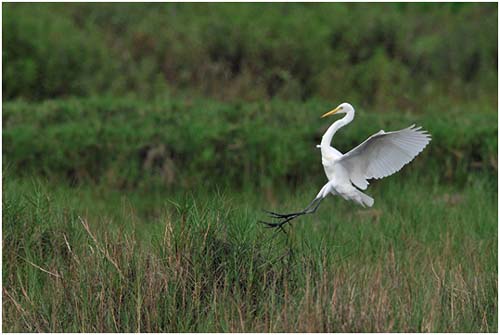
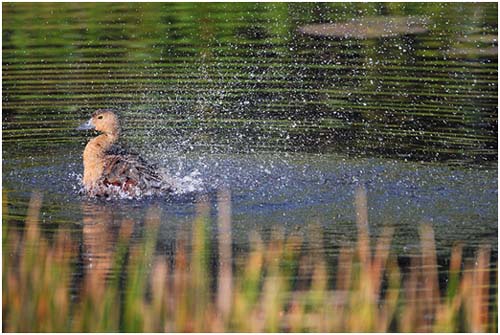


- Details
- Denis Giles
- Hits: 2832
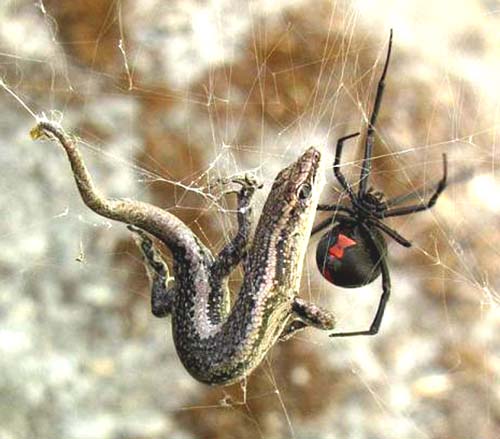
Spiders are not insects, although they belong to the same phylum of animals as insects. Spiders have four pairs of legs and two body segments, they do not have wings or antennae. Spiders belong to the class Arachnida while insects belong to the class Insecta. Spiders are closely related to scorpions, ticks and mites. There are about 37,000 of known species of spiders in the world. Spiders vary in size from the 10 inched bird-eating tarantulas of the rain forest to as small as pin point (0.37 mm) as in Patu digua, a spider of Columbia and they vary widely in colour. The Spider Wasp is the biggest predator of Spider species. The blood of a Spider is light blue in color. They are found everywhere; in soil, under rocks, on grasses, on tree branches, in caves, in your garden or even in your restrooms. Many spiders only live for one or two years, but some like tarantulas live for about 20 years.
Silk: Spiders have glands that make silk. The strongest material in the world is considered as the silk that spiders create. Scientists have not been able to recreate this design even with all the available technology that we have today. The silk is used to capture prey in elaborately woven webs, to wrap and protect eggs and as a bungee cord to move from place to place.
Venom: Spiders are carnivorous and feed on living prey. They crush the prey with processes on the pedipalps, and the chelicerae and have glands that can inject a venom. The bite of some large spiders are painful, but most species are too small to break human skin and only a few are dangerous to humans. Black widow spider is one of the poisonous species, they are nonaggressive and bite humans only in defense. Their painful bite is followed by faintness, difficulty in breathing; although the bite sometime leads to death. Spider venom are neurotoxins, which affects the victims nervous system, typically resulting in paralysis. Some injects cytotoxins that affect the cell tissue. There were about 100 reliably reported deaths from spider bites.
Benefits to humans: Cooked tarantula spiders are considered a delicacy in Cambodia, where the venom gland and outer hairs are removed before cooking. Most spiders are helpful to humans by killing insects harmful to animals and plants. Spider venoms are found to be less polluting alternative to conventional pesticides as they are deadly to insects. Possible medical uses for spider venoms are being investigated for the treatment of cardiac arrhythmia, Alzheimer's disease and strokes. Fine transparent spider silk fibers are used by scientists working on optical communications to introduce minute diffraction patterns over propagating N-slit interferometric signals.
Contributed by: Dr. J. Benjamin Franklin, Scientist, NIOT, Port Blair.
- Details
- Denis Giles
- Hits: 1478
Food plays an important role in maintaining the nation as it produces a healthy citizen for her protection mentally, and physically. Due to poor economic background, many students do not consume the proper nutritious food. To make it available, the central and state governments took initiative to introduce the mid-day meal scheme in the schools. It is appreciable work as to serve the humanity a fist of rice with dal. This scheme helps the motivated child to learn beyond the poor economy.
Many schools implemented this scheme and running successfully. It is also need to ensure how many children are really consuming the food in his/ her school. They avoid the food because of improper cooking of food, or they found worms or stone-grains in the food in the past. Improper cooking, worms and stone-grains not only will make the food waste but also reduce the attendance of the students, if consumed.
Students from above poverty-line (APL), bring food from home or hotels for lunch. They normally bring noodles, poorie, biscuits and other junk/fast food. It is the responsibility of the student to consume healthy food. Parents have to ensure their children eat healthy food and do not skip break-fast, lunch and dinner no matter whether both parents are office-going.
The school-going children should consume balanced-diet containing protein, carbohydrate, fat and other vitamins & minerals in the requisite amount. Students especially in the adolescence period i.e., from 11 to 19 years should include all the nutrients in their diet. During this period, the body grows enormously, metabolic rate is also high. High energy must be provided for the body to perform its function properly. When the physique is fit, the children become mentally also fit.
Starchy food like cakes, biscuits, noodles and other foods made of maida flour creates craving for food and stomach problem. Food rich of fiber like roti/chapatti, grains, cereals, pulses, dates, vegetables help in bowl movement and provide the requisite nutrition also to the growing children. So, these must be included in their diet.
Water consumption is also founded to be a major issue in the children. Lots of stomach complaints could also found in the schools. Water helps in regulating the acid-base level and smooth bowl movement in the body. Those who consume no or less water, these students come with stomach-ache, gastric problems in the school. School must make available the pure drinking water facility. At least 2 liters of water must be taken daily.
There is no doubt of creating a healthy citizen for our country if we ensure proper, healthy food for our growing children.
L. Elaya Raja, Science Teacher, VKZPV, Diglipur.
- Details
- Denis Giles
- Hits: 1915
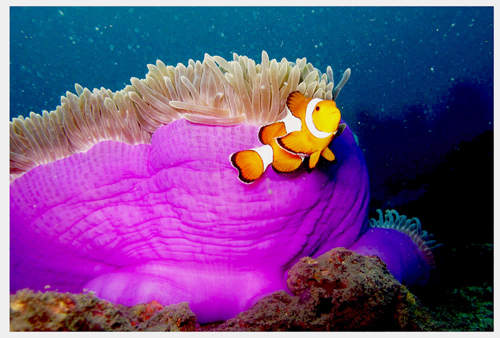
A famous Disney animation movie introduced the underwater world through a movie, Finding Nemo. The movie was well received and Nemo, the clown fish, received a lot of attention, not only with children but also with grown ups .
The habitat of Nemo is coral reef ecosystem, which is a colony of individual corals. The coral animal or polyp has a simple gut that opens at one end and a mouth surrounded by tentacles. These tentacles live in association with algae called zooxanthallae. They form a calcium carbonate structure, which is the main skeleton of the reefs. Corals thrive in bright, sunlit, nutrient-rich areas and provide habitat for thousands of organisms including fish and a variety of other marine life—from large mammals to tiny shells.
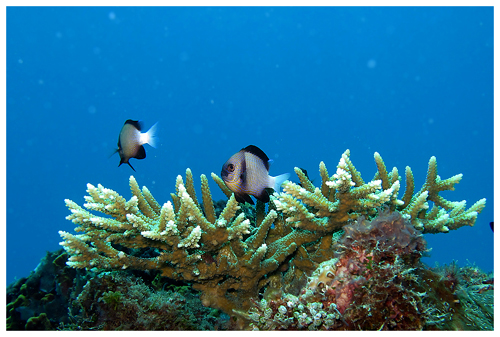
However over the recent years this ecosystem has been threatened due to destructive fishing practices, pollution and their sensitivity to global climate change. In Andaman and Nicobar islands, the reefs have a history of suffering. In 2004 there was a massive tsunami, which impacted the reefs. At some sites, coral reefs were broken into chunks while in others, suffocated by piles of mud and debris. Just when reefs had begun to recover, they were affected by yet another natural disaster—the bleaching of 2010.
The bleaching or whitening of corals occurs when there is sudden increase in sea-surface temperature. Coral animals are sensitive to temperature changes and require warm water between 25-27° C to thrive. When temperature increases, there is a breakdown of the symbiotic relationship between corals and algae resulting in death of the reefs.
Certain areas got heavily affected whereas few reef areas survived the bleaching. Why a few areas survived, while others got affected is interesting; and understanding the processes and mechanism of bleaching could help managers to concentrate their efforts on areas that are naturally resilient to bleaching.

Currently, Andaman Nicobar Islands’ Environmental Team (ANET) runs a project supported by Wildlife Conservation Society is conducting in-depth research to unravel the mystery of why a few reefs survived this bleaching event while the others didn’t. By conducting a series of reef surveys and comparing the various levels of destruction and resilience, we will be able to get a glimpse into this complex event. This will allow us to understand Nemo’s habitat – the coral reef system better so that we can begin taking steps to protect it. While this may not directly result in reversing the effects caused by the bleaching, it can certainly lead to better resource planning and management such as, reducing the man made impacts like habitat destruction, pollution, overfishing and improper disposal of garbage, giving hope to the future of the reefs.
- Vardhan Patankar
- Details
- Bency Joy
- Hits: 1560
We all entered into the NEW YEAR 2013.The first day of the year is perhaps the only day that celebrates the passage of time and that’s why most of us became introspective as the final seconds of the year tick away.